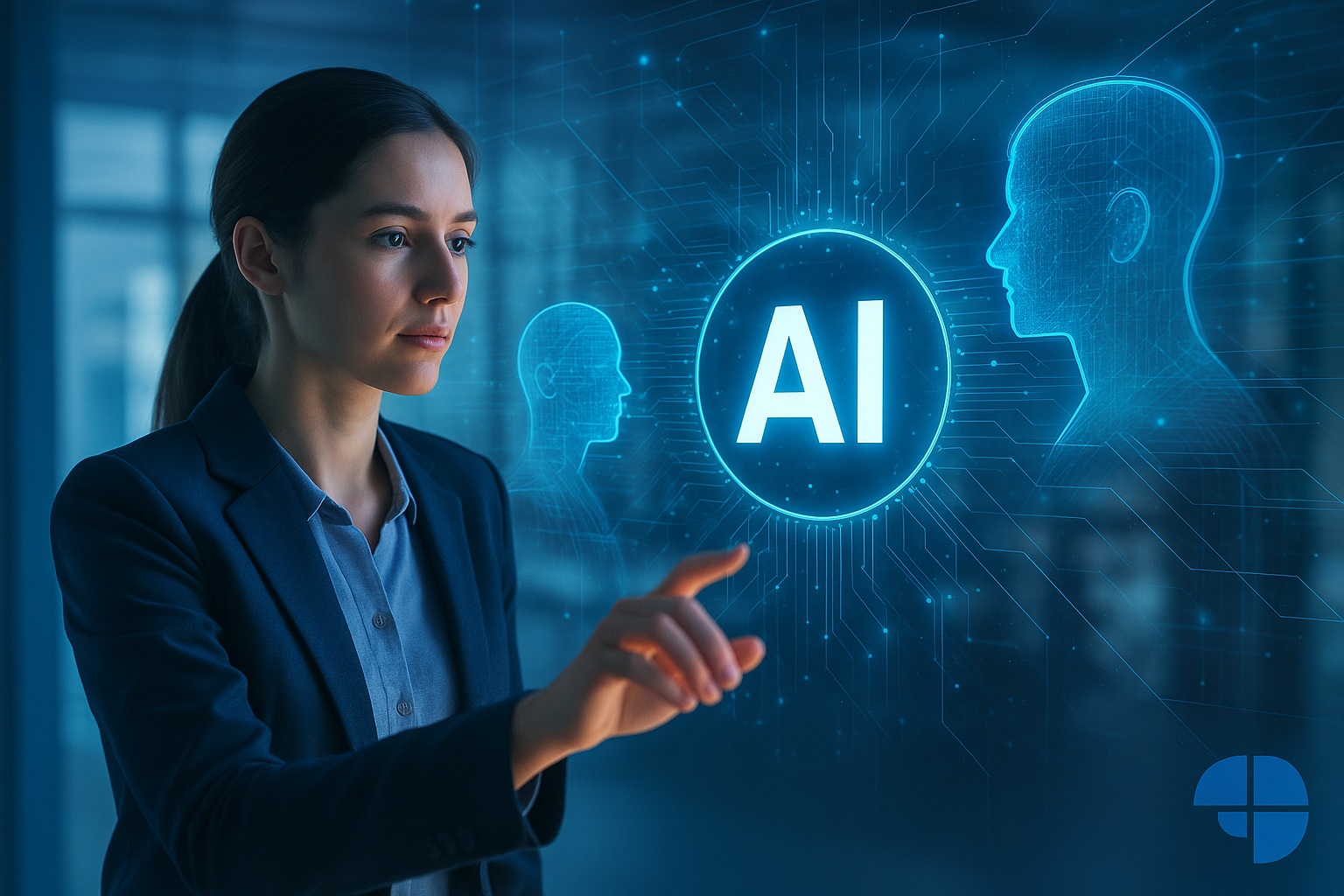Recent research from McKinsey, BCG, and others shows one clear trend: artificial intelligence is transforming not just tasks but the entire DNA of work.
Leading organizations go beyond digitizing processes. They redefine roles, culture, and leadership. This article shares the latest insights and examples that reveal what truly drives success in the age of intelligent work.
The New Work Reality: What Research Reveals
Studies by McKinsey, BCG, Deloitte, Davenport, Bloom, and Jesuthasan present a clear message: the future of work lies at the intersection of humans and machines. To make AI work effectively, companies must rethink job design, learning, and leadership and guide change with empathy and vision.
Rethinking Work and Roles
McKinsey´s The Human Side of Generative AI encourages companies to view work as a flexible system. Instead of automating entire roles, it’s more effective to deconstruct them into smaller tasks and rebuild them creatively. Likewise, Ravin Jesuthasan’s Rethinking Work in the Age of AI highlights how “work deconstruction” helps integrate people and technology more purposefully. This approach enables agile structures that balance efficiency and creativity.
AI as a Collaborative Partner
McKinsey’s concept of “Superagency” takes collaboration even further. In Superagency in the Workplace, AI agents are described as active partners that empower employees instead of replacing them. As a result, workers gain autonomy, make faster decisions, and deliver higher-quality outcomes.
The Human Side of Transformation
BCG and Deloitte emphasize the human dimension of AI transformation. According to AI at Work 2025, only one-third of employees feel well prepared to use AI. Deloitte’s Global Human Capital Trends 2025 adds that learning agility, trust, and leadership are vital to closing this gap. Transformations succeed more often when leaders themselves adopt a learning mindset.
Redefining How Work Happens
Davenport and Bloom offer yet another perspective. They argue that debates about “Return to Office” miss the bigger shift. In the Harvard Business Review they note that work in the AI era is fluid, task-based, and context-driven. Therefore, the critical question is no longer where work happens but how it is created and delivered.
Opportunities and Risks of AI Transformation
Artificial intelligence offers enormous potential, but it also brings new challenges. Most studies agree: when implemented thoughtfully, AI boosts productivity and learning. However, poor adoption can lead to confusion, inefficiency, and mistrust.
Potential for Growth
McKinsey estimates that generative AI could unlock up to 4.4 trillion USD in global productivity each year (The Economic Potential of Generative AI, 2025). AI automates routine work, enables deeper insights, and frees people for creative and strategic tasks. At the same time, AI-powered tools transform how employees learn — offering real-time feedback and personalized development paths.
Managing the Challenges
Still, the transition is not without risks. Many employees fear job loss, a concern McKinsey highlights in The Human Side of Generative AI.
BCG warns of a “Silicon Ceiling”, where only certain groups benefit from AI, while others are left behind (AI at Work: Momentum Builds, but Gaps Remain, 2025). Deloitte points out that cultural barriers often block progress, especially when leaders fail to model curiosity and adaptability.
Moreover, data privacy, bias, and algorithmic fairness remain vital concerns. Jesuthasan also cautions that embedding AI into outdated structures stifles innovation — urging companies to reimagine work from the ground up (Rethinking Work in the Age of AI).
The Bottom Line
Ultimately, AI transformation is not a technology project. It’s a leadership and culture project. Companies that build skills, modernize work models, and align values create a foundation for sustainable success.
Real-World Examples: How Companies Integrate AI
Many organizations talk about AI, yet few apply it strategically. The following examples show how leaders combine technology, learning, and culture to achieve measurable impact.
Deutsche Telekom: AI-Powered Learning and Coaching
Deutsche Telekom, together with McKinsey and QuantumBlack, developed an AI-based learning platform tthat personalizes development paths for employees and supports leaders in talent management. The system tracks progress, recommends learning content, and provides instant feedback. By linking data, learning, and leadership, the platform turns professional growth into a continuous, data-driven process.
Heidelberger Druckmaschinen: Reinventing HR with AI
Heidelberger Druckmaschinen AG partnered with Deloitte to digitize and standardize its global HR systems.
Through AI analytics and integrated workflows, the company improved transparency, efficiency, and decision-making — proving that even traditional industries can benefit from data-driven HR.
McKinsey: Lilli, the AI Knowledge Assistant
McKinsey created Lilli, an internal AI agent that gives consultants real-time access to knowledge, analyses, and experts. Over 70% of employees use Lilli daily. It retrieves accurate insights, connects colleagues instantly, and improves collaboration quality — showing how agentic AI can redefine knowledge work and accelerate learning.
Conclusion
These cases reveal a simple truth: successful AI adoption depends more on mindset than industry. Deutsche Telekom, Heidelberger Druckmaschinen, and McKinsey demonstrate that when technology meets learning, leadership, and data literacy, productivity and innovation rise together.
For STRIMgroup, one insight stands out: AI is not an end in itself. It is a catalyst for sustainable, digital, and human-centered transformation.


Leave A Comment